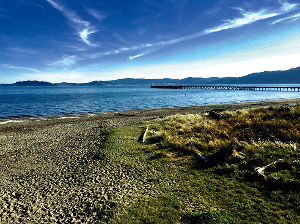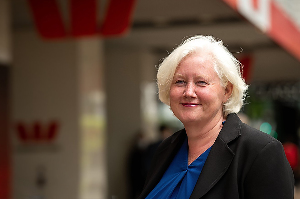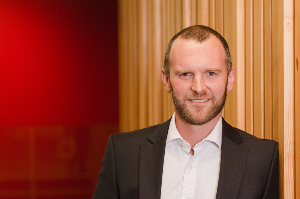
Just 15-minutes from the buzzing capital, Lower Hutt is a city on the move … upwards. As with the rest of the country, year-on-year house prices are soaring, with some popular suburbs looking at 20% (or close to) increases.
Located on the banks of Te Awa Kairangi (Hutt River) the area boasts many attractive outdoor lifestyle opportunities. There are beautiful local walking trails, food and wine galore, as well as retail, arts and cultural offerings. It’s been a popular place for home buyers wanting something cheaper than what’s on offer in Wellington, but lack of planning has led to significant shortfall in available land for development, and this has flowed on to a housing shortage that is driving prices ever higher.
But with new developments in the works, there are still opportunities for investors. And even though it’s hard to find a bargain in this red-hot market, there’s still investment potential to be found.
Only way is up
As a seasoned veteran of over 40 years, John Ross has experience all the ups and downs of the Lower Hutt market. But the owner of Professionals Redcoats in Lower Hutt says he’s never seen anything like the sky-rocketing prices experienced over the past few months.
“It’s unprecedented in the decades I have been working in the area,” he says of the prices. “It’s totally due to the lack of supply, which is something I’ve been predicting for years.”
Ross says that the lack of land available for property has been a perennial issue for Lower Hutt. He says that a report in 2020 revealed that the region was the worst performing in the country when it came to land supply. Nothing has changed.
“I’ve been predicting a housing crisis in Lower Hutt for over a decade,” he says. And it’s currently occurring.”
The figures from CoreLogic reflect this: the growth year-on-year is in double digits.
Alicetown (just north of Petone) experienced an astonishing 20% growth year-on-year in January, from $664,000 to $797,000. Stokes Valley is close behind, at 17.9% growth, from 509,100 to $600,300. Naenae is up 17.50% to $591,950 and the harbour-view suburb of Korokoro is soaring, up 17% to $930,150.
Ross says that the boom began in 2015, when Wainuiomata (a traditionally lower priced suburb) went up in value by $100,000 as buyers were pushed out of the Wellington market.
Naenae, which has traditionally been the location of 1,000s of state houses, also started attracting many home buyers and investors. “An ex state house, usually 100m² with a decent section, will now sell for a starting rate of $750,000 for a basic, unrenovated home,” says Ross.
In development
Transmission Gully is set to open later this year, connecting Wellington with SH58 at Pāuatahanui, and making the commute to Wellington quicker and smoother. There are other major infrastructure projects planned, many of which have thus far not come to fruition.
RiverLink is a bold plan to help improve transport links in the region. It will include a new bridge over the river, plus better walking, cycling and public transport options. There are also plans to create links to Te Ara Tupua (which is a Wellington to Hutt Valley link currently in development).
There is a further plan to rebuild the Naenae Pool that was shut down after the Wellington earthquakes, but this too is still in development stage.
Infrastructure aside, there are also new residential developments in the offing. Ross says that his company are currently selling house-and-land packages for Manapouri Grove in Kelson, which will eventually feature 250 homes. These are proving extremely popular with investors and owner-occupiers, and the prices have risen hugely since the selling started two years ago.
“We were selling 160m², three or four bedroom homes for $700,000 in 2019,” says Ross. “Now they are selling for $1 million-plus.”
Another development that is attracting interest is located in Parkway Rise, and will see the creation of 180 new homes.
“There is significant infill greenfield developments in some areas, but the usage changes have been instigated by private developers,” says Ross. “There needs to be more land freed up by council if there is to be a dent in the housing crisis.”
Investment spotlight
Upper Hutt historically was a cheap and cheerful investment option, where cashflow was positive and capital gains modest. But this has all changed. Investors are now looking for new, quality homes that won’t require extensive renovations to bring up to Healthy Homes standards. That means new builds and apartments are an attractive option.
Ross says that there is a significant number of older residents in the Lower Hutt area, and a shortfall of single bedroom dwellings.
“A lot of baby boomers in this area are on limited incomes, and finding it harder to afford the rents on larger homes,” he says. He believes investment in apartments or small units is a great way to go for investors.
John Butt is a long-term investor in Lower Hutt. His strategy has been to invest in high-growth areas, with “premium” tenants. He has reduced his stock in recent years, but still has small units as investment properties in Eastbourne. One of which was briefly vacant late last year.
“When we advertised this for rent before Christmas, we had 10 or 15 applications. But it seems as though a lot more stock has come onto the market recently, with a lot of investors buying in the area.”
He says that a two-three bedroom home in Eastbourne will fetch up to $600 a week in rent; whereas the same type of home in Petone will fetch around $550 a week.
Chris Casbolt is the chief executive officer for property management company Oxygen. He says that areas such as Naenae and Taitā are popular for family rental homes, with Central Hutt, Boulcott and Western Hills being popular with larger family homes and good school zoning.
He says that rents have increased proportionally year-on-year, but rent increases have resulted in more tenant movement. Three-bedroom plus homes are the most popular with renters, says Casbolt, with new builds and subdividable properties particularly popular with investors.
Casbolt says that yields have been affected by the values rising. “With the hot market not often much better than [a] range of 3-6% gross for mid-market properties.”
Samantha Pinny from Quinovic says that properties within certain school zones are consistently popular, such as Lower Hutt, Boulcott, Epuni, and Waterloo.
“However, while these areas continue to be popular, we are now seeing investors and tenants looking outside of these areas, especially where new subdivisions are happening, and in areas with other good quality homes and access to public transport links.”
She says that post lockdown they have noticed the market has become more stable. “But there is still a low supply of property compared to the high tenant demand in the Hutt Valley, and so we expect to see rent values climb.”
Pinny says that there are many different ways investors calculate yields, but the most significant thing they have seen in the past 12 months is properties at the upper end of the market becoming cashflow positive due to low interest rates.
“In the past, relocating property owners with homes over $800,000, might have had to sell as they couldn’t afford to top up the difference between the rent and the mortgage. Now the rent covers the mortgage so owners are not selling.”
BOX OUT 4: Find out more about investing in Lower Hutt
The Wellington Property Investors’ Association (WPIA) also covers Lower Hutt. It holds meetings in the last week of every month from February to November. For more information go to wellington.nzpif.org.nz or email wellington@nzpif.org.nz.
The Capital Property Investors Association (CPIA) operates in Lower Hutt too. For more information on the CPIA and its events go to capitalpia.org.nz or email capital@nzpif.org.nz.
These associations are soon to be amalgamated.




Comments
No comments yet.
Sign In to add your comment